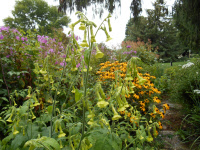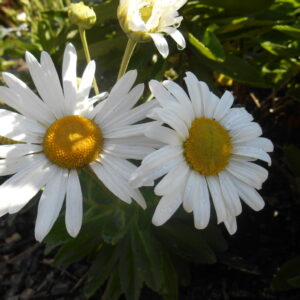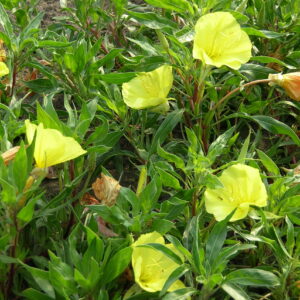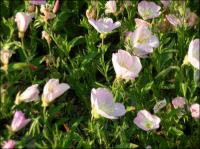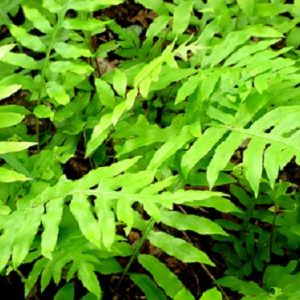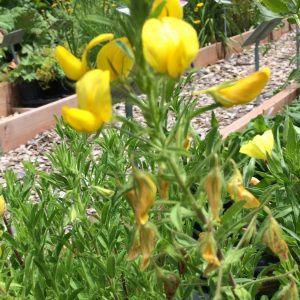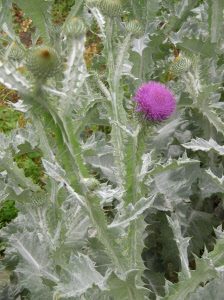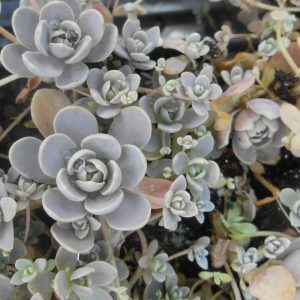Shop
Showing 521–528 of 788 results
-
Nicotiana langsdorffii Langsdorff’s tobacco Z 10-11, grow as annual in colder areas
Pendulous Granny Smith apple colored, tube-shaped flowers in summer through fall.
Pendulous Granny Smith apple colored, tube-shaped flowers, in summer through fall.
Size: 2-3’ x 6”
Care: full sun to part shade in well-drained soil
Native: Chile and Brazil
Wildlife Value: attract hummingbirds
Awards: England’s Royal Horticultural Society Award of Merit.Nicotiana langsdorfii introduced in 1819. The genus name nicotiana named after John Nicot who introduced smoking tobacco to Europe. Langsdorfii named to honor Russian naturalist Georg Heinrich von Langsdorff, Baron de Langsdorff ( 1774 -1852), Russian consul general in Brazil and leader of Langsdorff Expedition of Brazil, 1826-1829.
-
Nipponanthemum nipponicum, syn. Chrysanthemum nipponicum, Chrysanthemum album Nippon daisy, Montauk daisy Z 5-9
Yes, you can have pristine white daisies all summer and into fall. Grow Shastas for summer flowers then pair them with Nippon daisies for 3” blooms in late summer and fall. Excellent cut flower
Yes, you can have pristine white daisies all summer and into fall. Grow your Shastas for summer flowers then pair them with Nippon daisies for 3” blooms in late summer and fall. Excellent cut flower.
Size: 2-3' x 2-3'
Care: sun in well-drained soil. Cut back in early summer to keep it short and bushy, if you wish.
Native: JapanPhysician and botanist Phillip von Siebold (1796-1866) collected it during his 8-year residence in Japan working for the Dutch East India Company. Described in 1872 in Bull. Acad. Imp Sci. Saint Petersburg 17:420 (p. 208) Named Montauk after a ship carrying a shipment shipwrecked at Montauk Long Island and the plants grew on the beach.
-
Oenothera macrocarpa syn. O. missouriensis Ozark sundrops Z 3-7
Big, lemon-yellow blossoms much of the summer, then turn into curious-looking, big oval seed pods
Big, lemon-yellow blossoms much of the summer, then turn into curious-looking, big oval seed pods
Size: 9-12" x 12"
Care: sun in well-drained soil
Native: Missouri & Nebraska
Awards: Royal Horticultural Society Award of Merit.Oenothera is Greek meaning wine tasting referring to the ancient use of Sundrop roots. This discovered in 1810 by Thomas Nuttall when he traveled along the Missouri River “on the elevated summits of the …hills in the vicinity of the lead-mines of the river Meremeck, 30 miles from St. Louis, Louisiana.” (then in the Louisiana Territory). Nuttall described it as a “splendid and singular species.”
-
Oenothera speciosa Evening primrose Z 5-8
June to August pale pink saucer-like blossoms
ARCHIVED
Note: This is a plant not currently for sale. This is an archive page preserved for informational use.
June to August ballerina pink saucer-like blossoms, excellent groundcover.
Size: 12" x 12" spreader
Care: Full sun moist well-drained to well-drained soil
Native: Southwest U.S. to MexicoAnother Thomas Nuttall discovery – 1819.
-
Onoclea sensibilis Sensitive fern Zones 4-10
Medium green fronds grow with deep curves along the wide stem then grow outward with lance-shaped fronds with wavy leaf margins. Don’t be fooled by the name sensitive. This is a tough fern growing just about any place with some shade.
OUT OF STOCK
Medium green fronds grow with deep curves along the wide stem then grow outward with lance-shaped fronds with wavy leaf margins. Don’t be fooled by the name sensitive. This is a tough fern growing just about any place with some shade.
Size: 12-20" x 24” spreading, slowly by rhizomes.
Care: part to full shade in moist to well-drained soil
Native: Eastern North America, Wisconsin native
Awards: England’s Royal Horticultural Society Award of Merit.Collected before 1700. Sensibilis means sensitive on account of fronds dying back when it frosts. Oneida used this for bedding when hunting. According to Oneida tradition if a woman drinks an infusion, she can never have children after she gets married.
-
Ononis natrix Yellow restharrow Z 4-8
Yellow pea like flowers with red veins June- August
ARCHIVED
Note: This is a plant not currently for sale. This is an archive page preserved for informational use.
Yellow pea like flowers with red veins June- August
Size: 12” X 12”
Care: sun in dry soil
Native: Syria, Lebanon, Palestine, Jordan, Egypt, Tunisia, Algeria, Morocco, Circum-MediterraneanLinnaeus 1753
-
Onopordum acanthium Scotch thistle, Woolly thistle Biennial Z 5-9
Soft, majestic purple-magenta thistles on prickly silver foliage and stems.
Soft, majestic purple-magenta thistles on prickly silver foliage and stems.
Can not ship to: Arizona, Arkansas, Colorado, Connecticut, Idaho, Missouri, Nebraska, Nevada, New Mexico, North Dakota, Oklahoma, Oregon, South Dakota, Texas, Utah, Washington and Wyoming.
Size: 4-6’ x 2”
Care: full sun in moist, well-drained soil
Native: Europe and western Asia
Wildlife Value: Bees, butterflies and birdsIdentified by Dioscorides in De Materia Medica for medicinal use around 70 A.D. Chosen as the symbol of Scotland by King James V. According to legend the Scotch thistle helped Scotland fend off a night-time Viking invasion by preventing a sneak attack. It caused the Vikings to scream in pain waking the Scots. Introduced to American gardens in late 1800’s.
-
Orostachys iwarenge Chinese dunce cap In China called wa song shu Z 5-10
Three-in-one: starts as fleshy silver-blue rosettes spreading to 12” across, then pyramids (dunce caps) of foliage & finally pink & white frilly flower spikes in October. Mother plant dies after flowering, but its offsets survive (like Hens & chicks) plus it reseeds for more plants next season.
Three-in-one: starts as fleshy silver-blue rosettes spreading to 12” across, then pyramids (dunce caps) of foliage & finally pink & white frilly flower spikes in October. Mother plant dies after flowering, but its offsets survive (like Hens & chicks) plus it reseeds for more plants next season.
Size: 6” x 14”
Care: sun to part shade in moist well-drained to well-drained soil
Native: China1st described in Western literature in 1878. Renamed several times – Cotyledon malacophylla var. japonica (1878), Cotyledon iwarenge, Sedum iwarenge.

